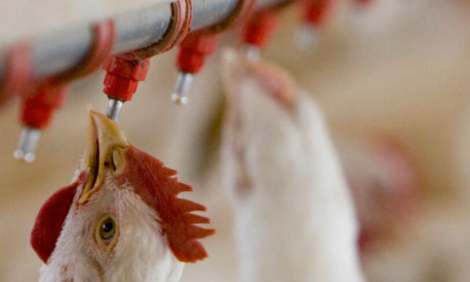



CME: US Aims for Balanced Turkey Inventories Heading into 2017
US - The turkey industry is coming into the end of the year trying to fine tune production in order to have inventories balanced with consumer demand at the start of the new year, according to a Daily Livestock Report published by Steiner Consulting Group.This usually means having freezer inventories of turkey on January 1 at close to 200 million pounds with whole turkey inventories in the 50-60 million pound range.
Frozen turkey inventories on November 1 were at 396 million pounds, up 44 million pounds from a year earlier. Maintaining this same increase to the end of the year would result in end-of-the-year inventory at 245 million pounds, the highest inventory in four years.
Turkey slaughter in October, the last reported monthly data from USDA-NASS, was down 2 per cent from a year earlier. On a per day basis, since this October had one less slaughter day than a year ago, slaughter was up 2 per cent.
The 2 per cent increase is modest when considering that turkey hatchery output in the months corresponding to October slaughter were up 6-7 per cent from a year earlier. Normally, variations in monthly slaughter track closer to hatchery output than what was seen this October.
A continuation in the downward bias of slaughter relative to hatchery output in prior months would be helpful in bringing the amount of turkey in cold storage at the end of the year close to inventories at the beginning of 2016.
Turkey consumption this year has been on a path to post the biggest annual increase since 2007. Spring quarter consumption was up 91 million pounds from a year earlier and summer quarter consumption was up 106 million pounds. These comparisons are somewhat skewed by turkey availability that was curtailed by Avian Influenza during 2015.
Consumption in October was only up 2 million pounds from twelve months earlier, which will make it difficult to increase quarterly turkey consumption during the Thanksgiving and Christmas holiday quarter by an amount similar to the prior two quarters. Putting a lid on production increases during the current quarter would make sense, if consumption gains are limited and freezer inventories at the beginning of the term are above last year, as they are.
Holding production this quarter close to a 5 per cent increase (4 per cent more slaughter and 1 per cent heavier average bird weight) could be a stretch given hatchery output in July and August was up 7 per cent, and September hatchery output was up 13 per cent. A 5 per cent increase in production matched with consumption that is similar to a year ago leaves 290-300 million pounds of turkey in cold storage.
In 2012, when frozen turkey inventories finished the year at 296 million pounds, whole bird prices were in a free-fall during December. Wholesale hen prices went from $1.08 in the first week of the month to $0.98 in the last week of December and eventually bottomed out at $0.93 in the third week in February.
Turkey breast meat prices held up better than hen prices initially, holding a $2.05 price through December, but then declined throughout the first four months of 2013, finally finding a bottom in late April of $1.54. Breast meat prices failed to show any price strength until June 2013.
The turkey industry may be cognizant of a replay of the 2013 market in 2017. Net poult placements to grow-out farms during November were only up 3 per cent from a year earlier. This compares with 13 per cent and 6 per cent gains in September and October, respectively.
Also notable, eggs in incubators at the beginning of September, October, and November were up 22, 17, and 10 percent, respectively. Eggs in incubators at the beginning of December were up 7 per cent from a year earlier.
Extrapolating the relationship between eggs in incubators at the start of the month to net poult placements in the month that followed puts net poult placements for December unchanged to down slightly from December 2016.








